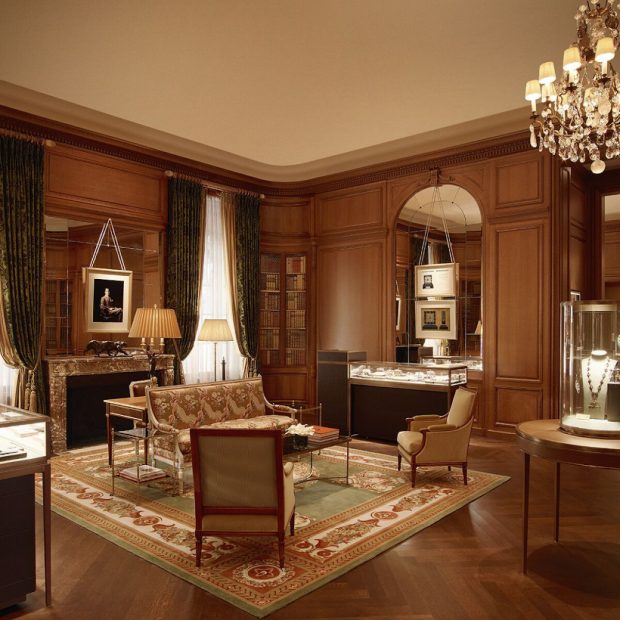
The Maison Cartier has been based in New York for 100 years. For the historic anniversary, the house opened its extensive archive for the first time.
The guest list on the mild October evening was just as precious as the jewels presented: director Sofia Coppola, photographer Arthur Elgort and entrepreneur Martha Stewart crossed over to Governors Island, an island of around 70 hectares in Upper New York Bay. There, with a view of the Statue of Liberty, the Maison Cartier presented its new Haute Joaillerie collection “Résonances”.
Pierre Rainero, the house’s image and strategy director, summed up the spirit of the house in three words: “rien de trop”. Nothing is too much. “Cartier is a finely calibrated balancing act between extravagance and absolute purity.” The purity refers to the gemstones, the extravagance to the designs.
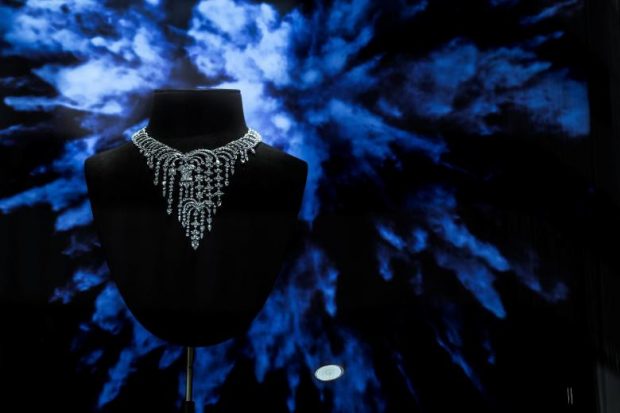
Source: Cartier
There’s a lot to celebrate for the French in the US this year. They have resided on 5th Avenue for 100 years. Pierre Cartier, a grandson of the founder of the jewelry company Louis-François Cartier, moved across the Atlantic as early as 1907, where, after opening flagship stores in Paris and London, he finally wanted to conquer the USA. Befitting his status, he was looking for an address on the “Millionaire’s Mile”, as 5th Avenue in New York was known for a long time. But first, they had to get rid of the local jeweler Dreicer, who was imitating Cartier designs faster than Cartier could ship the pieces across the Atlantic.
READ: “Ludlow Hotel” in New York: Room 1401
After the royalty, tsars, and maharajahs of Asia and Europe, the entrepreneur now set out to seduce the industrialists, financiers, and Hollywood aristocrats of the New World with the modern designs of the family business. First, the millionaires’ mile was conquered: Pierre opened the first boutique and studio on the top floor of house number 712.
In order to introduce Cartier in the USA as spectacularly as possible, he was looking for a very special stone. In 1910 he found a suitable object in the 45.52 carats, deep blue and plum-sized “Hope Diamond”. The jewel, originally owned by Louis XVI, was said to be tainted with a curse and there were even whispered rumors that the evil diamond was for Louis XVI. and Marie Antoinette’s beheading.
The European rumor mill also hit Evalyn Walsh McLean, a gold mining company heiress, and wife of the then editor of the Washington Post, who was attracted to him despite, or perhaps because of, the dark power the jewel emanated.
As hoped, the powers of the Hope Diamond were hotly debated in the press and the New York branch was soon flooded with inquiries. From the Art Nouveau windows of house number 712, Pierre flirted with the six-story neo-Renaissance city palace diagonally opposite, with house number 673.
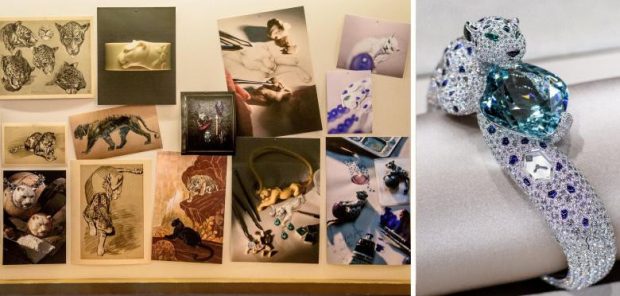
Panther as a trademark: the “Panthère Secret Watch”
Source: Cartier
The railroad and shipping magnate Morton F. Plant, who had just moved into this private residence, initially rejected all purchase offers. But his wife, Mae (Maisie) Caldwell Manwaring Plant, who was 30 years his junior, was unhappy there. The Vanderbilts and Astoria had long since moved a few dozen blocks down Central Park, and beautiful Maisie felt socially isolated between the high-rise malls and five-star hotels.
READ:Real New Yorkers: How Do They Live?
While strolling through the original Cartier workshop, she discovered a double-row natural pearl necklace made of 55 and 73 enormous South Sea pearls. Cost for both strands: One million dollars – finding flawless pearls of this size was still extremely time-consuming and expensive at that time, cultured pearls only flooded the market in the 1920s. At his wife’s urging, Morton F. Plant agreed, and Pierre purchased the building in exchange for the pearl necklace and $100 in cash. An investment of the century that should quickly pay for itself.
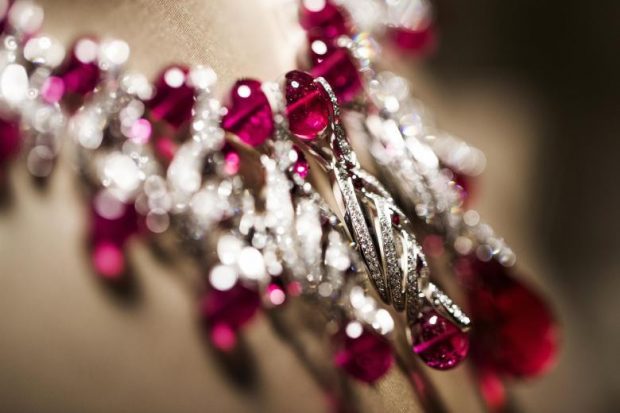
“Murmure Necklace” from the Résonances collection in white gold with brilliants and rubellites
Source: Cartier
With the move into the city villa, Cartier’s studio and salesrooms were separated and space was created for an in-house archive: In addition to designing illustrations, invitations, catalogs, photographs, receipts, and newspaper clippings, the acquisition of gemstones and pearls is also documented here. Manufacturing techniques are also described in detail and, above all, correspondence with Haute Joaillerie customers is managed.
For Pierre Rainero, the brand is still strongly inspired by the spirit of modernism and cubism. “Cartier was never about fashion in terms of trends. Modernity is the expression of a changing image of women.” This is also confirmed by an elastic headband commissioned in 1924 by Nanaline Duke, wife of electricity and tobacco tycoon James Buchanan Duke, with two pear-shaped diamonds. After World War I, women in the United States were allowed to vote and began working. Corsets disappeared and the androgynous look of hairstyles and clothing prevailed. Nanaline Duke may not have freaked out dancing the Charleston to jazz, but the headband signaled sensitivity to this paradigm shift.
Elizabeth Taylor’s dog almost ate the La Peregrina pearl. Many of the surviving sketches, illustrations, and photographs are provided with the wishes and comments of the high-profile clientele of Marjorie Merriweather Post, owner of General Foods, Ellin Mackay Berlin, wife of Hollywood composer Irving Berlin, and of course Elizabeth Taylor, who presented some pieces of her huge Collection made by Cartier.
READ: The ETIHAD Luggage: Rules are Always Dependent on the Tariff
For Valentine’s Day 1969, Richard Burton Taylor bought the valuable La Peregrina pearl – originally from the Spanish royal family – at Sotheby’s. The head of the jewelry department at the time, Ward Landrigan, personally presented the piece to the actors and actresses in their suite at Caesars Palace in Las Vegas. Taylor and Burton are said to have had a few of their beloved “Salty Dogs” (vodka with clam broth) because shortly after Taylor retreated to the next room to try on the jewelry, she excitedly announced that she had already lost the pearl.
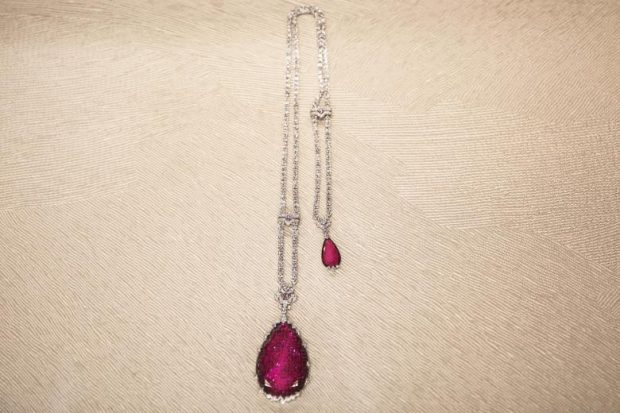
“Retba Neklace” from the Résonances collection in white gold with pink and white diamonds and a pear-shaped rubellite
Source: Cartier
Panicked, Landrigan threw himself onto the plush pink carpet until a telltale crack from one of Taylor’s Lhasa Apsos dogs threatened the worst. A quick grab by the actress in her favorite’s mouth confirmed the suspicion that dogs couldn’t resist the precious piece either. Luckily, La Peregrina escaped with only a few scratches.
After the shock, Taylor vowed to let Cartier redesign the piece of jewelry in an eye-catching and stodgy way. Illustrations from the archive show how the pearl could be combined in several variable pieces of jewelry. Taylor’s instructions are written in bold red on the drafts. In 1972, a variable series was created around pearls with rubies and diamonds as brooches and necklaces in two different lengths.
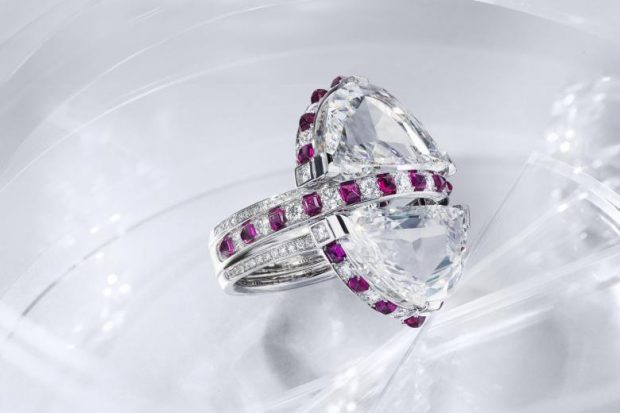
“Orbite ring” from the Résonances collection with crescent-shaped diamond and hand-cut rubies
Source: Cartier
Parts of day-to-day business are also managed in the archive. Lavishly printed invitations and catalogs were regularly sent to customers. By the 1930s, they were already being lavishly printed in color, and the price of twelve dollars for a ruby ring makes you want to travel back in time. Above all, however, shows Pierre’s skillful hand with public relations.
Although today all jewelry is made in Paris, the archive, called “Collection”, is an important department in New York that detective finds, identifies and, if possible, buys back jewelry of the Maison on the market. Some of these pieces are included in the house’s permanent collection, others are acquired for resale for the vintage department “Tradition”.
After two years of renovation of the house and reopening with a really big party in 2016, the former residence now shines in new splendor. The expansive spaces are discreetly paneled and exude the inviting intimacy of a luxurious private residence. Each room in the “Cartier Mansion” is named after one of the most famous customers and decorated with photos: Grace Kelly, Elizabeth Taylor, Andy Warhol – he was the wearer of the iconic “Tank” watch, which also celebrates its 100th anniversary this year.
In the “Maisie Plant Salon” on the ground floor hangs a portrait of the former resident of the house, who radiates a mysterious Mona Lisa triumph from her blue eyes with noble boredom. The pearl necklace with which the building was once purchased shines in her rosy décolleté. Maisie’s husband Morton died a few years after the move. Maisie married twice more and enjoyed a long life at the center of New York society.
After her death, the pearl necklace is said to have been sold at auction for a fraction of the original value. Except for a few notes, there is no trace of the legendary pearls, the iconic memento of the history of the New York branch. Even the archive’s master researchers have not been able to change anything about this. Some secrets remain hidden even to them forever.
Like us on Facebook for more stories like this: